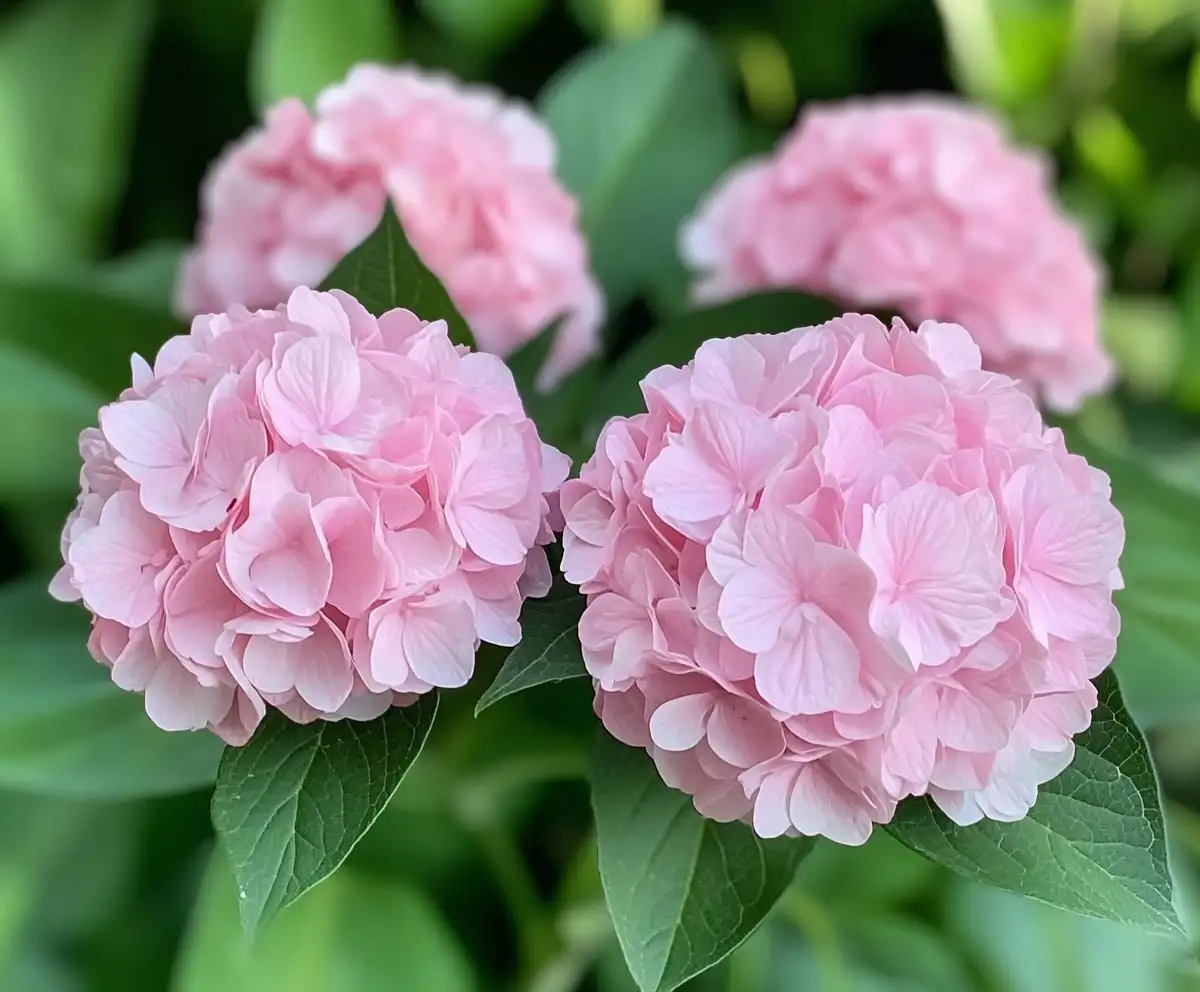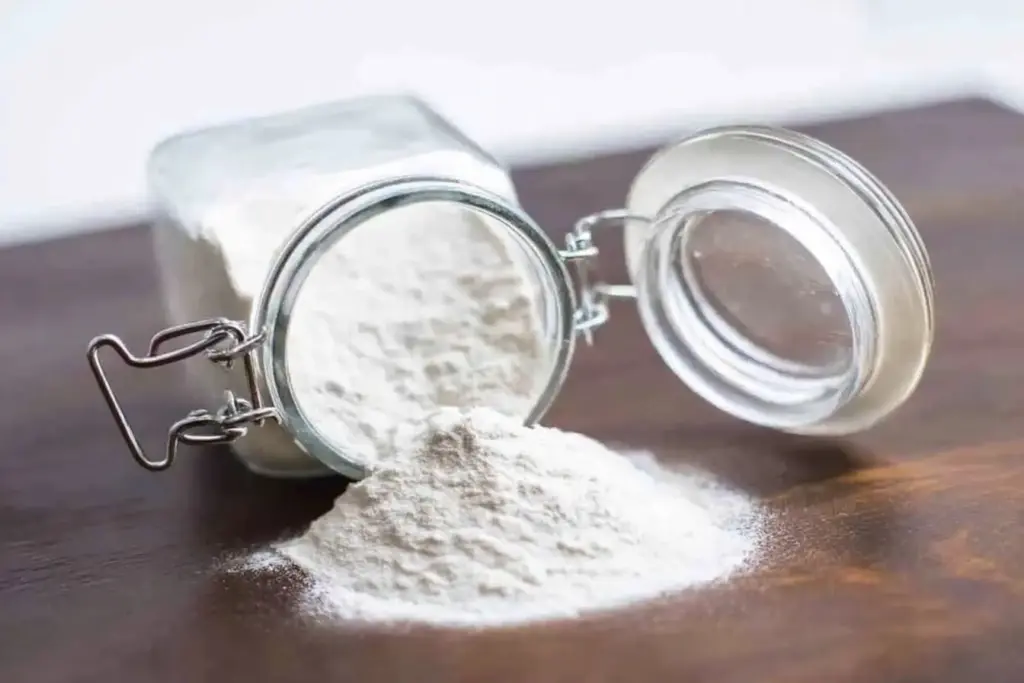Baking soda for hydrangeas is a topic that has sparked curiosity among many gardening enthusiasts. With countless tips circulating on gardening forums and social media, it’s no wonder people are eager to try household remedies like baking soda to improve their hydrangea blooms. But is it really effective? Before you test it out, why not explore other proven hydrangea care tips or discover drought-tolerant plants that might suit your garden better? Let’s dive into the truth behind using baking soda for hydrangeas, exploring whether this popular remedy is a garden game-changer or just another myth.
🌿 Love gardening inspiration? Follow me on Pinterest for bold plant ideas, tips, and seasonal color!
Table of Contents
Why You Shouldn’t Use Baking Soda for Hydrangeas?
While many gardeners swear by baking soda for hydrangeas, it’s crucial to understand that the benefits often cited are largely anecdotal. Though baking soda—technically known as sodium bicarbonate—does have some mild antifungal properties, there’s no solid scientific evidence proving it enhances blooms, changes flower colors, or significantly improves plant health.
In fact, hydrangea enthusiasts aiming for vibrant blooms and healthy plants should approach baking soda treatments with caution. Instead of being a miracle cure, using baking soda may even disrupt the delicate balance of your garden’s soil chemistry.
Let’s unpack some of the most common claims and separate fact from fiction.
Benefits of Baking Soda for Hydrangeas Aren’t Proved Yet
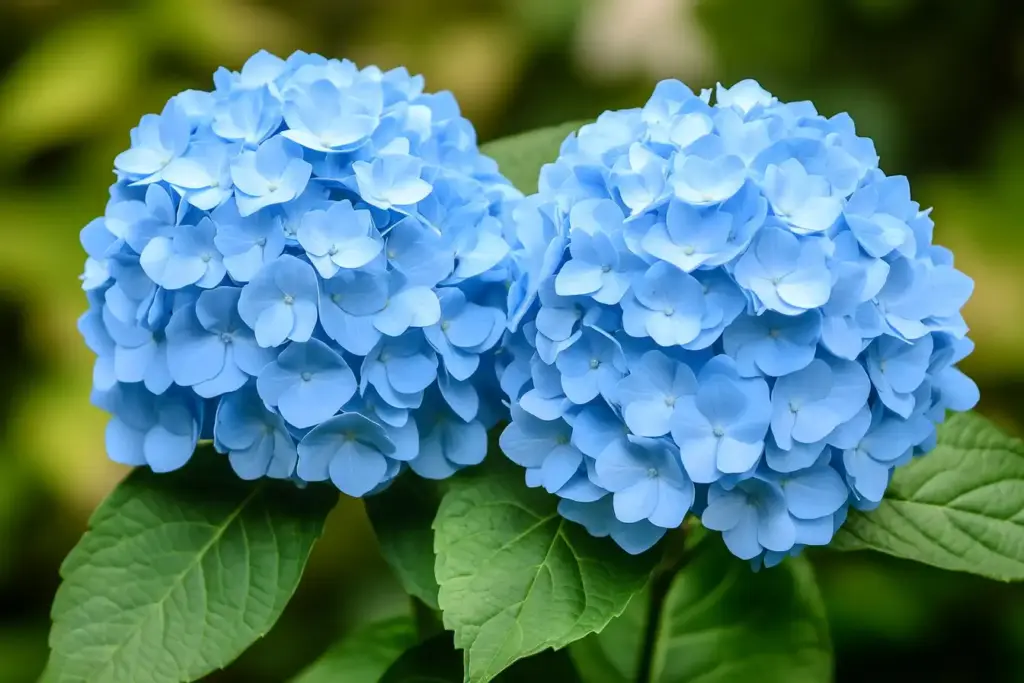
Despite its popularity in gardening circles, the purported benefits of baking soda for hydrangeas remain largely unproven. Enthusiasts often claim that baking soda can enhance flowering, alter bloom color, and prevent fungal diseases. However, these claims lack scientific backing.
In reality, sodium bicarbonate isn’t a magic ingredient for healthy hydrangeas. Although it might possess mild antifungal properties, its role in influencing flower color or bloom production is speculative at best. Moreover, its impact on soil pH is minimal compared to proven soil amendments like lime or sulfur.
Relying on baking soda alone could lead to disappointment rather than a garden full of brilliant blooms. Let’s explore why these alleged benefits are not supported by science.
Is Baking Soda Good for Hydrangeas?
When it comes to baking soda for hydrangeas, the answer is: it’s complicated. While baking soda is celebrated for its household versatility, it doesn’t necessarily translate to plant health or enhanced blooms. Sodium bicarbonate may have some antifungal properties that could help with minor fungal infections, but it’s far from a comprehensive solution for hydrangea care.
In fact, baking soda doesn’t supply the essential nutrients that hydrangeas need to thrive. It lacks the nitrogen, phosphorus, and potassium that plants rely on for robust growth. Moreover, the idea that baking soda can drastically change flower color or boost blooming is simply a gardening myth. For consistent and healthy hydrangeas, it’s better to focus on proper soil management, watering, and fertilization.
Understanding Hydrangea Color Change
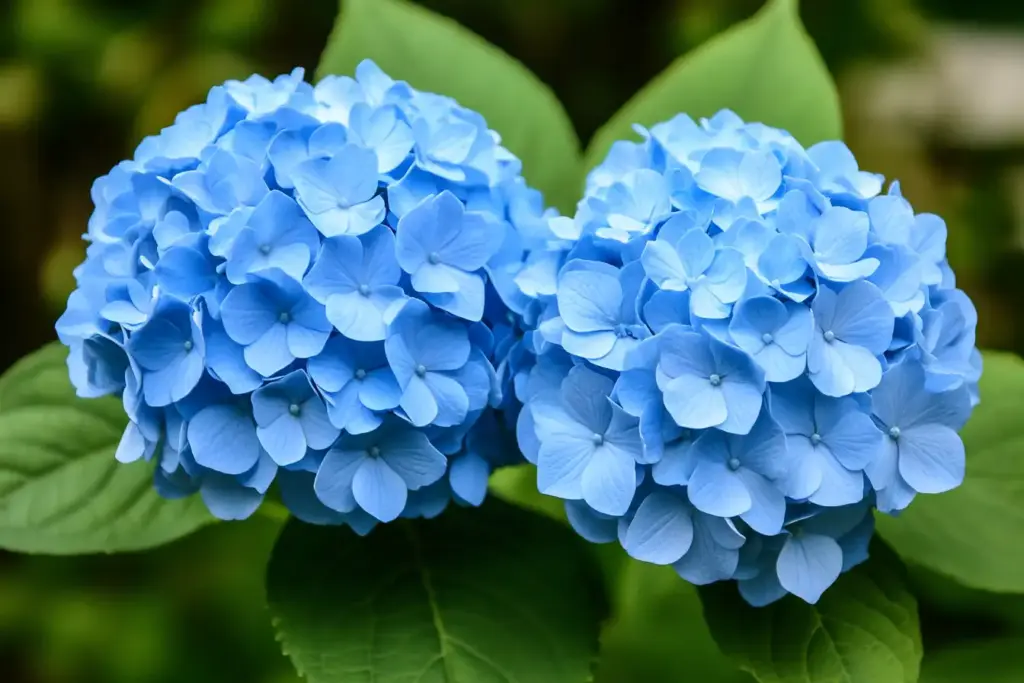
Many gardeners are intrigued by the ability of hydrangeas to change flower color, and it’s often assumed that baking soda for hydrangeas can help with this transformation. However, the science behind color change in hydrangeas is more complex than simply sprinkling a bit of baking soda on your soil.
Hydrangeas’ flower color primarily depends on the soil’s pH and the availability of aluminum. Acidic soils (low pH) make aluminum available to the plant, leading to blue blooms. On the other hand, alkaline soils (high pH) limit aluminum uptake, resulting in pink flowers. Baking soda is an alkaline substance, so in theory, it could raise the soil’s pH and encourage pink flowers—but in practice, it’s not that straightforward.
Soil pH is influenced by multiple factors, including the type of soil, organic matter, and existing mineral content. Adjusting soil pH effectively requires precise amendments like garden lime or sulfur, which are proven to provide reliable results. Relying on baking soda alone is unlikely to give you the color change you’re hoping for.
Baking Soda and Its Alleged Benefits
The supposed benefits of baking soda for hydrangeas range from boosting blooms to fighting off fungal diseases. However, most of these claims are anecdotal and lack robust scientific support. Let’s break down the most commonly touted benefits:
Enhance Blooming
It’s often suggested that baking soda can stimulate flower production, but research shows that sodium bicarbonate doesn’t supply the essential nutrients hydrangeas need. Without proper nutrition—like nitrogen, phosphorus, and potassium—even the healthiest soil can’t produce abundant blooms. Relying on baking soda alone won’t do the trick.
Change Flower Color
Baking soda is alkaline, which means it can theoretically raise soil pH, shifting hydrangea flowers from blue to pink. Yet, this approach is overly simplistic. Real soil chemistry is far more complex, and making significant changes requires accurate testing and targeted amendments like lime or sulfur—not just a dash of baking soda.
Fungal Disease Prevention
Baking soda does have mild antifungal properties. It may help manage minor fungal infections on your hydrangeas, but it’s not a guaranteed cure. Moreover, using too much can disrupt the soil’s balance and potentially harm your plants.
Understanding these alleged benefits is key to making informed gardening choices. Instead of chasing quick fixes, focus on proven methods to care for your hydrangeas properly.
Scientific Perspective
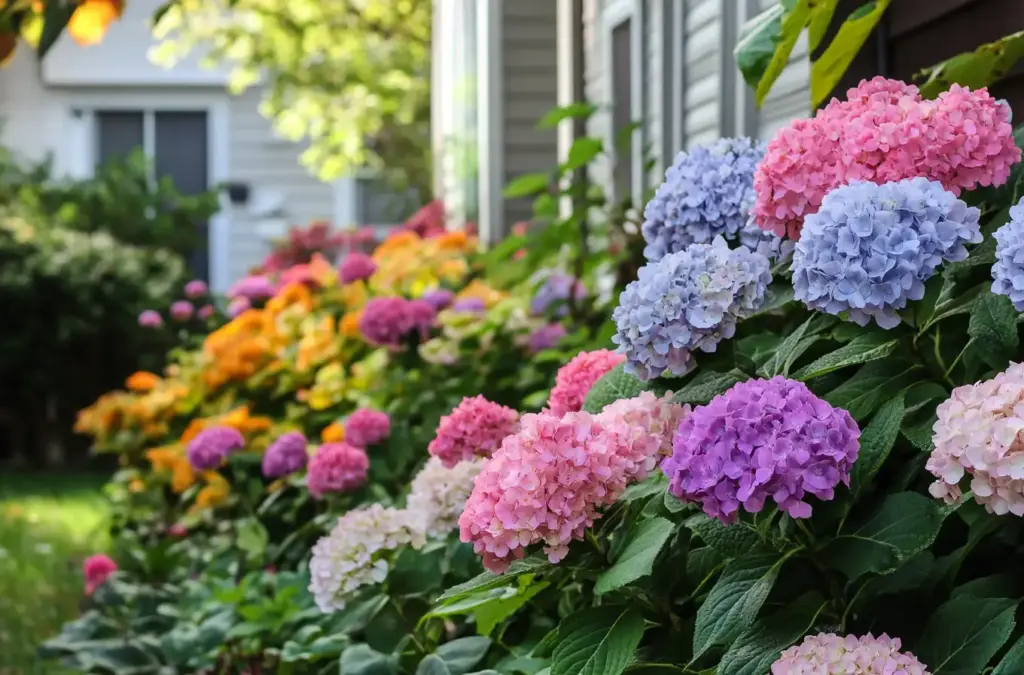
From a scientific standpoint, the supposed benefits of baking soda for hydrangeas are largely overstated. While baking soda’s mild antifungal properties may help with minor fungal issues, they do not replace proven gardening practices or provide a comprehensive solution for plant health.
Extensive research and experience in horticulture emphasize the importance of proper soil management, balanced fertilization, and consistent watering practices. These proven methods ensure hydrangeas thrive and produce beautiful blooms. Sodium bicarbonate, on the other hand, does not supply the critical nutrients hydrangeas require—such as nitrogen, phosphorus, and potassium—nor does it address the complexities of soil chemistry effectively.
In fact, relying too heavily on baking soda could disrupt the soil’s pH balance, potentially harming your hydrangeas rather than helping them. Instead, gardening experts recommend well-established horticultural practices for vibrant, healthy hydrangeas—like testing soil pH, using the right fertilizers, and providing adequate moisture.
Understanding the science behind plant care empowers gardeners to make informed decisions that go beyond trendy tips and anecdotal remedies.
Does Baking Soda Turn Hydrangeas Blue?
One of the most persistent myths about baking soda for hydrangeas is that it can magically turn pink hydrangea flowers blue. However, this idea is based on a misunderstanding of how hydrangea flower color works.
Hydrangea color changes are directly tied to soil pH and the presence of aluminum in the soil. Acidic soils (low pH) make aluminum more available to the plant, leading to blue blooms. Conversely, alkaline soils (high pH) make aluminum less available, resulting in pink flowers.
Baking soda is alkaline, so adding it to your soil actually raises the pH, making it less acidic. This reduces the amount of aluminum your hydrangeas can absorb, and as a result, is more likely to encourage pink flowers rather than blue ones.
So, while baking soda might affect the soil pH slightly, it certainly won’t transform your hydrangeas from pink to blue. For reliable color changes, it’s better to use proven soil amendments like sulfur to acidify the soil or lime to make it more alkaline, depending on your desired flower color.
Can Baking Soda Be Used as Fertilizer?
Although many gardening enthusiasts believe that baking soda for hydrangeas can serve as a fertilizer, the truth is that sodium bicarbonate does not provide the essential nutrients plants need. Fertilizers typically contain a balanced blend of nitrogen (N), phosphorus (P), and potassium (K)—the fundamental nutrients required for healthy plant growth, robust flowering, and overall vitality.
Baking soda lacks these critical nutrients and therefore cannot support the comprehensive needs of hydrangeas. Applying baking soda to your soil might change the pH slightly, but it won’t replace the nutrients hydrangeas need to thrive.
For healthy, vibrant blooms, it’s important to invest in fertilizers specifically designed for acid-loving plants. These fertilizers help maintain the correct soil pH and provide the vital nutrients your hydrangeas require to flourish season after season.
How to Use Baking Soda for Hydrangeas?
If you’re still curious about experimenting with baking soda for hydrangeas, it’s important to approach it cautiously and understand that results may vary. Here’s a simple method to try if you’re interested in testing its effects:
- Mixing Solution: Dissolve 1 tablespoon of baking soda in 1 gallon of water.
- Application: Water the base of the hydrangea plant with this solution once a month. Avoid spraying the leaves or flowers directly, as baking soda may cause damage or stress to the plant tissue.
- Monitoring: Observe your plant closely for any signs of improvement or stress. Remember, baking soda’s benefits are largely anecdotal and may not yield consistent or reliable results.
While trying out home remedies can be fun, always pair them with tried-and-true gardening practices like proper watering, fertilizing, and soil pH management. These will have a much greater impact on your hydrangea’s health and blooms than baking soda alone.
Conclusion
While baking soda for hydrangeas is a popular home remedy in the gardening community, its benefits are not scientifically proven. If you’re looking to enhance hydrangea blooms or change their color, focus on proven methods like proper soil management, consistent watering, and the use of appropriate fertilizers. Experimenting with baking soda can be interesting, but it should never replace established horticultural practices that ensure healthy and vibrant hydrangeas.

